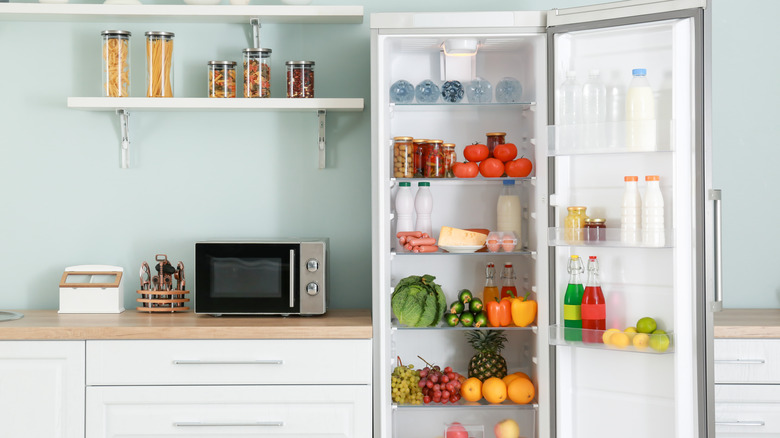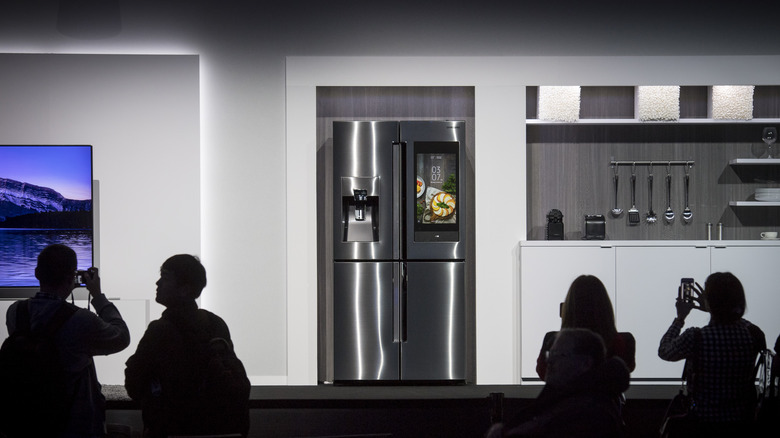This Might Be Your Fridge's Most Useless Feature
From smart dishwashers to display screens on the front of your fridge, it seems like nowadays your appliances are designed more around gimmicks than actually doing the job you expect them to do. There always seems to come a time when it starts to feel that you're paying more for the fancy display screen or the built-in coffee dispenser rather than the appliance itself. Sure, it may be cool or quirky to have at first, but at the end of the day, you just want your fridge to do one thing: keep your food cold.
This is not to say unique innovations and inventions are in any way bad! If anything can make life easier for those who work in the kitchen or food industry, then by all means, it deserves praise. Indeed, a pressure cooker that can double as a slow cooker and a rice cooker or a 12-in-1 convection oven can do wonders for just about any chef. To others, however, some features of the modern dishwasher or refrigerator are just not worth the money or time. One example of a so-called "useless" feature, according to CNET, is what is known as the "in-fridge temperature zone."
Is the in-fridge temperature zone even worth it?
Just what is the in-fridge temperature zone? Via Coolblue, a fresh-keeping zone is an area in your fridge where the temperature is best suited for certain food items. For example, the "0-degree" zone is best used to store meat, fish, and vegetables thanks to the titular temperature. These zones usually have adjustable temperature and humidity based on the sort of foodstuffs you are currently putting in your fridge. This sounds useful to those who may keep plenty of fresh produce in their refrigerator and want to keep fresh as long as possible, but why exactly would someone think it is a useless feature?
While CNET does agree this sounds like a useful feature, they argue it's only useful in theory. Their review notes that several of the drawers and compartments with adjustable temperatures they have tested "struggled" to achieve the correct temperature that was set or flat-out showed no difference of temperature/humidity change compared to the rest of the fridge. The main reason these zones don't work, they state, is due to their location within the main body of the fridge. Had the zones been located on the doors — such as on LG's French model or even in a totally separate compartment such as Samsung's 4-door model — they would have worked much better.
Perhaps it's not that the feature is totally useless, per se, but rather it needs to be installed on the right type of model to actually work.

